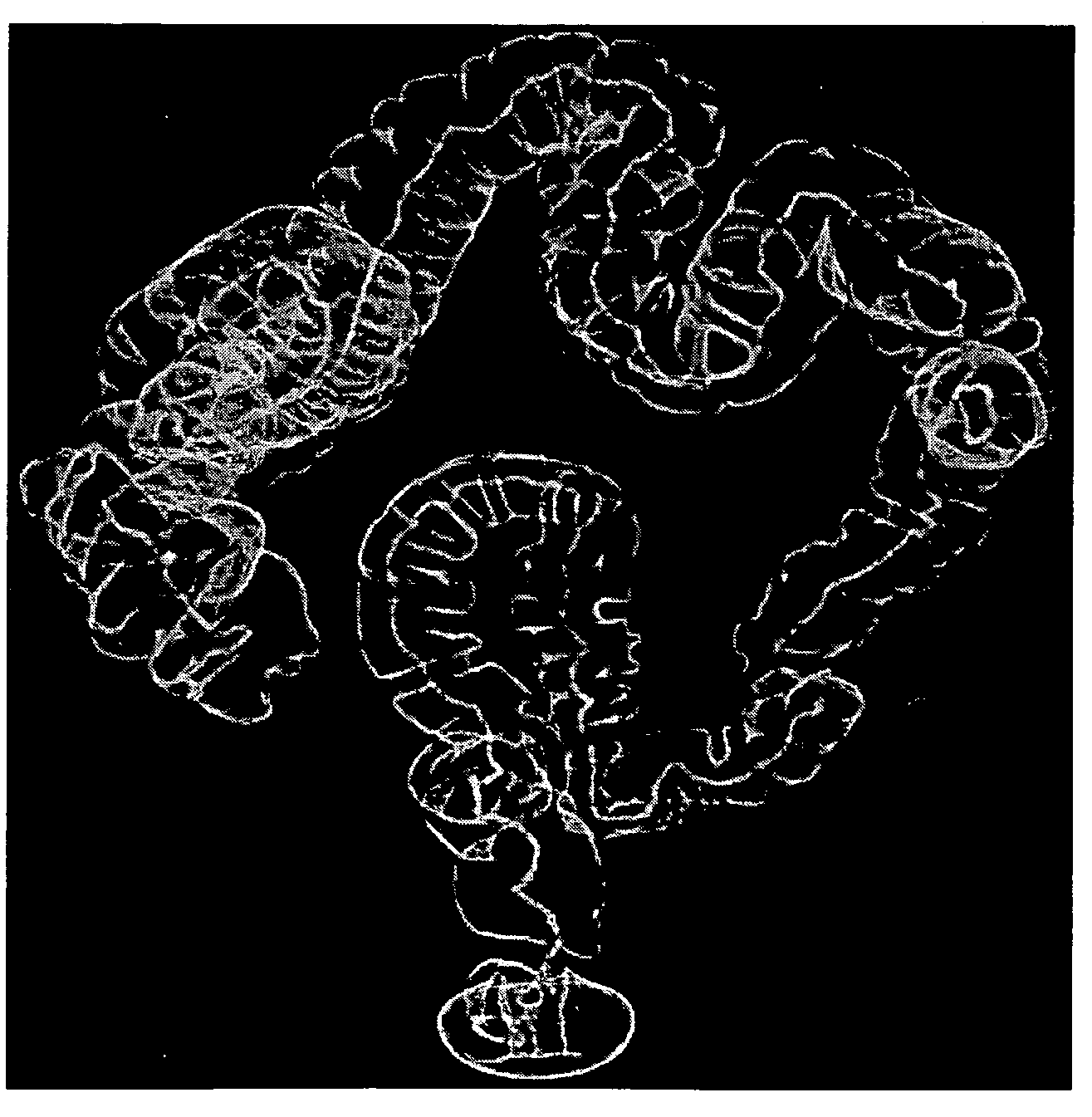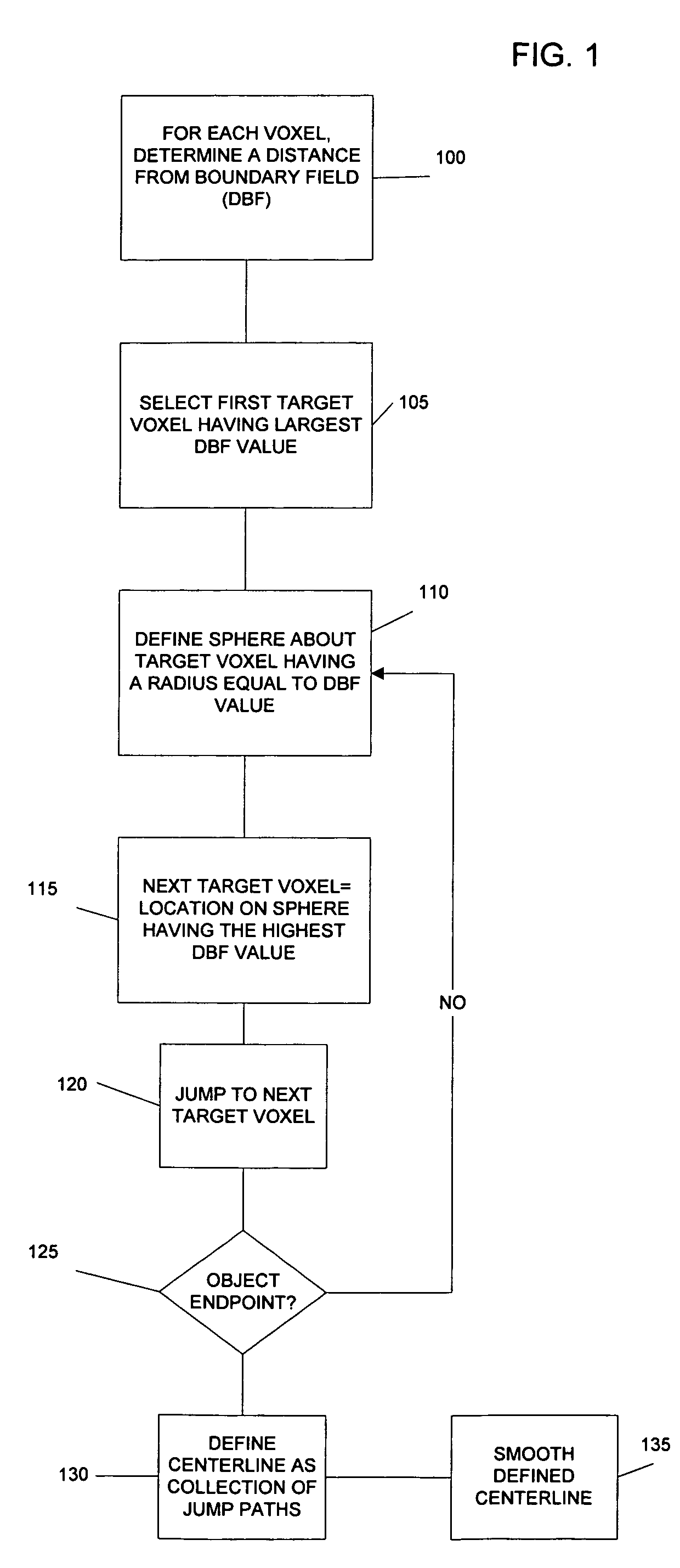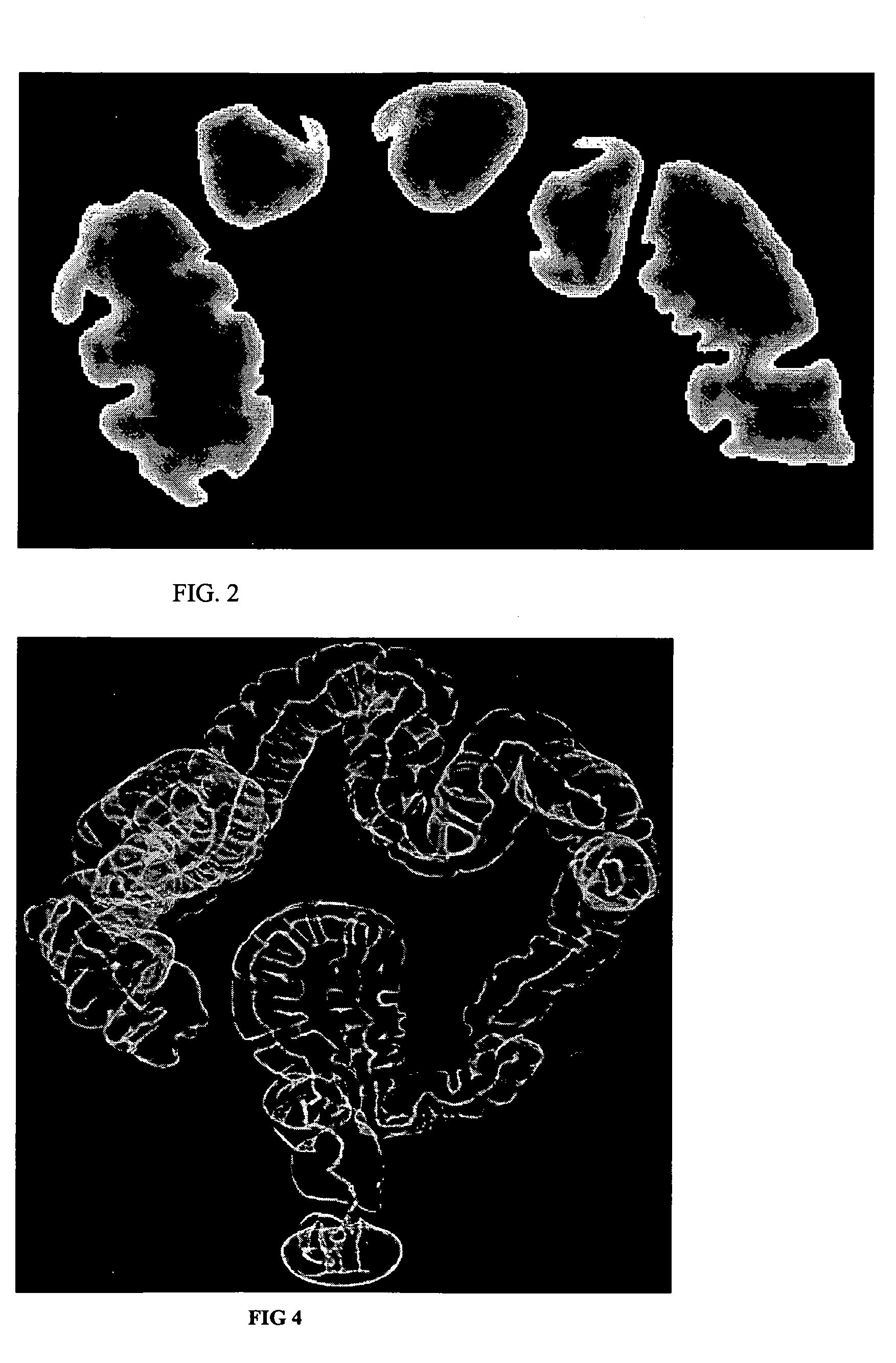Method of centerline generation in virtual objects
a technology of virtual objects and centerlines, applied in the field of 3d virtual environments, can solve the problems of not meeting the requirements of property 1, cannot be completely solved, computationally complex and expensive, etc., and achieve the effect of improving the speed of the second method and increasing processing speed
- Summary
- Abstract
- Description
- Claims
- Application Information
AI Technical Summary
Benefits of technology
Problems solved by technology
Method used
Image
Examples
Embodiment Construction
[0022]The present invention will be described in the context of systems and methods for performing examination and navigation of virtual objects, such as in virtual colonoscopy procedures, but is not limited to such procedures. A system and method for performing such virtual examination and visualization of 3D virtual objects is described in U.S. Pat. No. 6,343,936, entitled “System and Method for Performing a Three-Dimensional Virtual Examination, Navigation and Visualization,” the disclosure of which is hereby incorporated by reference in its entirety. The present invention assumes that such systems and methods are used to acquire image data, create a three dimensional model of a virtual object and display the virtual object using a graphical user interface or other suitable user interface.
[0023]Referring to FIG. 1, a first method in accordance with the present invention determines the centerline through a virtual object based on a distance from boundary (DFB) field in which each ...
PUM
 Login to View More
Login to View More Abstract
Description
Claims
Application Information
 Login to View More
Login to View More - R&D
- Intellectual Property
- Life Sciences
- Materials
- Tech Scout
- Unparalleled Data Quality
- Higher Quality Content
- 60% Fewer Hallucinations
Browse by: Latest US Patents, China's latest patents, Technical Efficacy Thesaurus, Application Domain, Technology Topic, Popular Technical Reports.
© 2025 PatSnap. All rights reserved.Legal|Privacy policy|Modern Slavery Act Transparency Statement|Sitemap|About US| Contact US: help@patsnap.com



